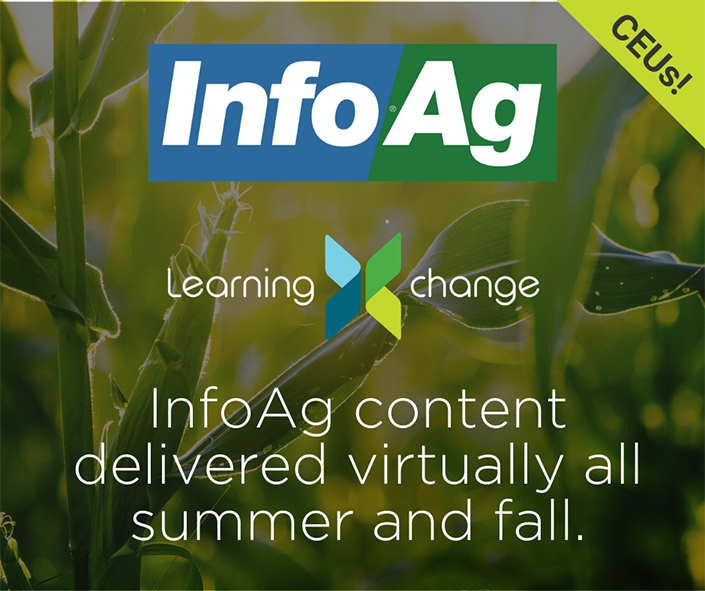The Growing Importance of Ag Technology in Today’s Industry

The launch of the PACE Executive Forum this year couldn’t be more perfectly timed, despite the delay of its debut caused by the pandemic. Over the past two-and-a-half years, the most pressing issues facing agriculture and the solutions required to address them have been reprioritized, catapulting seemingly non-urgent topics to the forefront while simultaneously revealing new challenges and opportunities.
It’s safe to say that the inaugural program, including the content areas and speakers, likely looks a bit different from what the PACE Executive Forum would have looked like just a few years ago.
Ag tech developments are critical to thriving in the new agribusiness environment, helping growers and their trusted advisors respond to new and evolving demands, including ongoing efforts to improve yield and cost efficiencies, while also staying on top of cybersecurity threats, workforce changes, regulatory compliance issues, and more recently, disruptions to the fertilizer market, supply chain bottlenecks, and more.
Findings from the 2022 CropLife/Purdue Precision Survey provide insights into what technologies are attracting interest and investments, what problems need solving, and how ag tech is helping solve them. For example, ag retailers expect high-tech pest management to be one of the biggest growth areas.
About one-third of dealers offer VRT pesticide applications currently, noted Bruce Erickson, the Education Distance and Outreach Director at Purdue University, who together with James “Jess” Lowenberg-DeBoer at Harper Adams University in the UK, analyzed results of the survey.
However, more than half of survey respondents now report that they plan to offer high-tech pest management in three years. In addition, while roughly a quarter of dealers indicate they now use a drone for some pesticide applications, almost half said they would be doing so by 2025.
The Growth of Robotics
Robotics is another fast-growing segment in ag tech, particularly robotic weeding and robotic scouting. While the 2022 survey found that only a few dealers are offering these now, 17% of dealers plan to offer robotic weeding, and 20% robotic scouting, within the next three years.
The strong growth in automation, including robotics, is not surprising given the changing demographics and workforce dynamics. The pandemic’s impact on the workforce — not just in the agriculture, but in related industries such as food processing, warehousing, transportation and manufacturing — is speeding up the embrace of automation.
While automation can compensate for a dwindling worker pool, ideally it also makes for a safer work environment, frees up people to focus on more important tasks, and brings a major boost in productivity and cost efficiency to farm operations.
This is where the PACE Executive Forum is uniquely positioned. It explores the “what’s going on and why does it matter” and adds context to what decisions are being made by farmers and their trusted advisors and others in the larger ag community.
And it brings clarity to both tactics and strategies.
Robots help get things done on the farm and support the physical talks that people perform; they can also provide valuable insights, data and analysis that results in an all-around “smarter” operation.
In many ways, ag tech is still in the early stages. There’s a lot more customization and fine-tuning that needs to happen. Furthermore, the ongoing challenges associated with software integration, interoperability, and affordability likewise impede faster and more widespread adoption of various ag technologies.
Yet, the benefits of investing in ag tech — more specifically, the right ag tech for a particular operation — cannot be denied.
Digitization is happening across all industries. If we look at the food supply chain, for instance, there exists a level of connectedness and visibility today that was almost unimaginable 10 years ago.
Transportation Management Systems (TMS), Warehouse Management Systems (WMS), demand planning software, S&OP, ERP, smart packaging, autonomous vehicles, the ubiquity of sensors, IoT, AI, AR, fintech, and much more are creating a significantly safer food supply chain for people and animals, reducing risks, eliminating waste in processes and resources, and helping connect agriculture producers to every other stakeholder downstream in the food supply chain.
These are the defining characteristics of a true value chain.
The speed of ag tech innovations coupled with the current “big picture” issues like inflation, energy prices, environment, the Russia-Ukraine war, transportation, and labor, to name a few, reinforce the timeliness of the PACE Executive Forum.
Multiple industries are confronting similar situations, and while there is some commonality in how to address the challenges, agriculture obviously faces distinct ones.
For one, food and feed are perishable and so are many chemicals and biologicals. There’s not an indefinite shelf life, which makes inventory management even more critical. While there’s been a lot of talk in the business world about moving from a just-in-time inventory strategy to just-in-case, this option is limited in agriculture.
And inventory is one of the most expensive line items for any business. You can’t sell it if you don’t have it, and if it’s sitting in a warehouse then it’s eroding your bottom line.
Agribusiness is adjusting to new demands on multiple fronts. The tactics and strategies that worked previously may not be the optimal solutions today, while the speed of innovation is opening up new possibilities.
The PACE Executive Forum’s three pillars — New Supply–Demand Dynamics, Changing Agribusiness Environment, and New Generation of Agriculture — provide the framework for the critical discussions and thought leadership that will chart the course of agriculture in 2023 and beyond.






